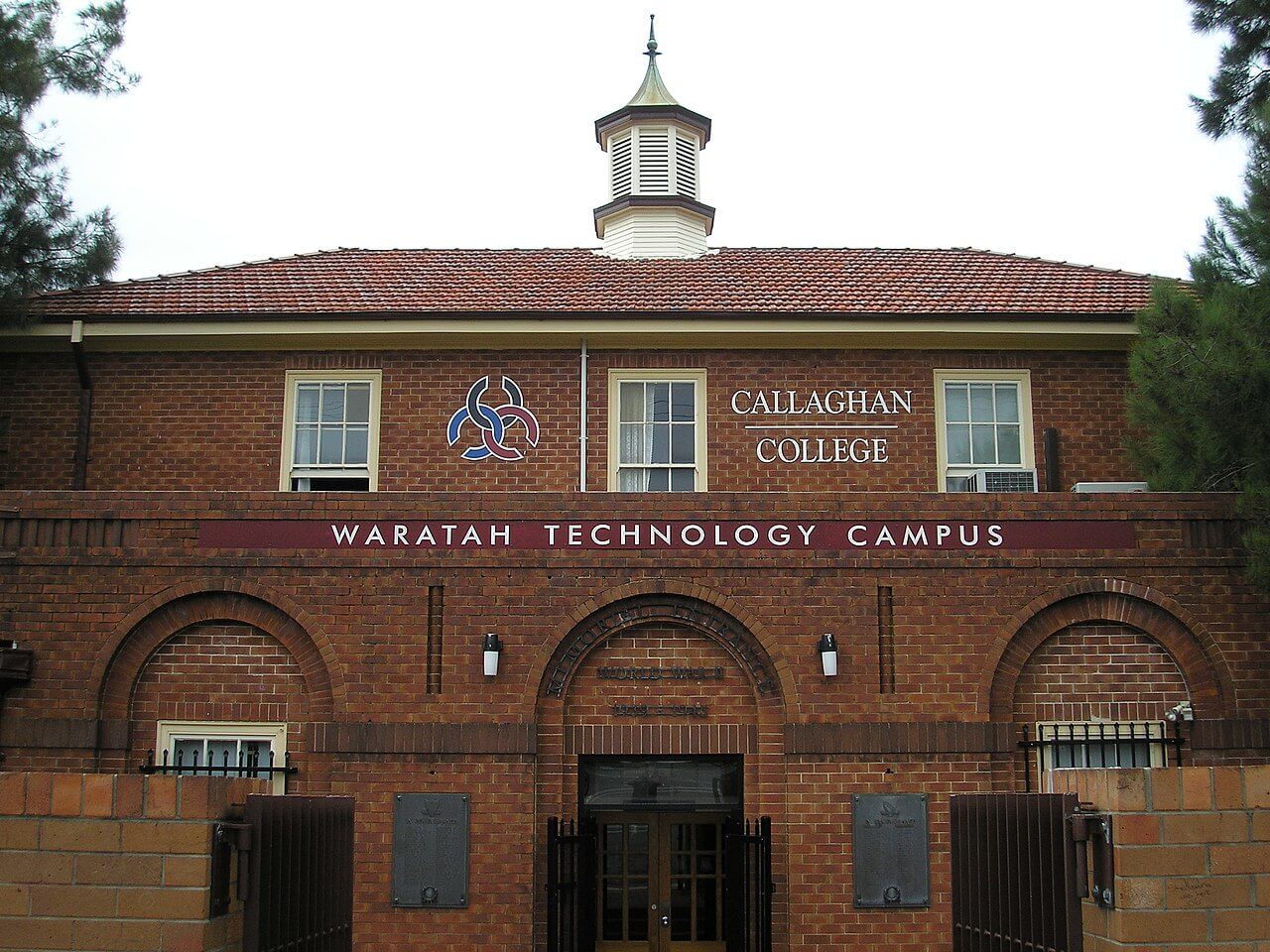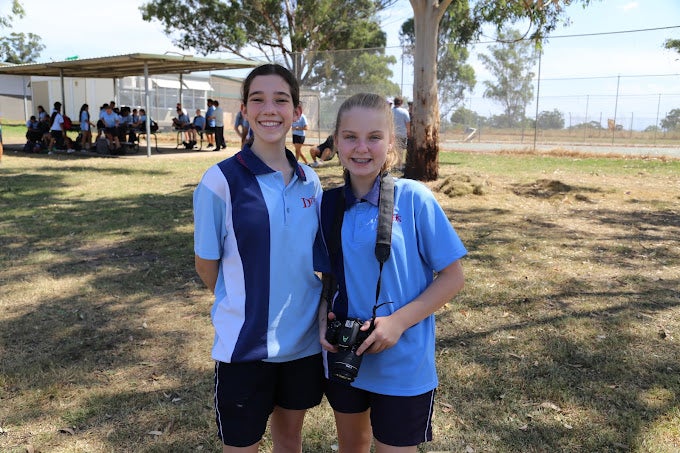
CASE STUDY 1
Callaghan College
The Challenge
Callaghan College is a multi-campus secondary school that is administered by the New South Wales Department of Education. It is committed to using technology extensively to prepare students for future learning and careers. Callaghan had used Moodle as its learning management system (LMS) for nearly seven years with other edtech tools. However, adoption was minimal and the college did not mandate the use of that LMS.
In addition, disparate software made access to content and communication among teachers, students, and parents difficult. Staff wanted teachers and students to have a central, integrated platform that could enhance their pedagogy, especially for blended learning and a “flipped” classroom. The school management stated, “We wanted a learning platform that really gave commonality of learning processes from K-12 within the college, was easy for people to use, was accessible 24/7, that really tapped into 21st Century learning for kids and for teachers.”
Other Findings
Canvas “pays for itself” by saving 60-70% of Callaghan’s photocopy allotted budget
Time savings - An assessment for 270 students saves 4 hours of marking for one task
The Decision
In 2016, Callaghan was implementing its student information system, Sentral, and discovered the Canvas learning management platform. Staff members saw that Canvas was able to integrate with Sentral and bring everything together in a flexible platform. Callaghan started a trial with Canvas - they migrated content and courses, set up rubrics, integrated Quizzes and saw that a teacher could save several hours each week by using the Canvas SpeedGrader. Callaghan made a decision to adopt Canvas as its new learning management platform and began training its staff with orientation and professional development courses. The college also realised that the change helped its objective to have learning and pedagogy at the forefront. Stacy Lambert, Head Teacher for Teaching and Learning at Callaghan, said, “What Canvas allows us to do is freeing us up as teachers from being a ‘sage on the stage’ and more of a ‘guide on the side’. You can get in and do those student-centred learning activities. And kids know what’s going on in the classroom.”
Key Findings
Callaghan’s Canvas site had more than 4 million views in 2018
Favorite features: Collaborations, Rubrics, SpeedGrader, and Canvas mobile applications
With Canvas, student online submissions have increased from 75% to 90%
72% of parents of Callaghan students surveyed said they had viewed Canvas with their child; 44% view Canvas daily and/or weekly.
We have three campuses on one Canvas. Going to the ‘cloud’ just saves so much time. We save resources with automatic updates and customer support.
David Summerville
Head Teacher of IT and Technology, Callaghan College
The Results
Callaghan is using college templates to ensure look-and-feel consistency across courses. Pedagogy is designed to use technology and develop critical thinking skills that allow students to become “future-ready”. The adoption of Canvas has, among other things, elevated teaching, prompted collaboration and amplified feedback to students. Andrew Johnson, Head Teacher PDHPE at Callaghan said, “With the Canvas application they’re seeing how that’s actually broken down, what areas they’ve scored well in, and what they need to work on. Also the beauty of it is actually giving them a comment and that could be talk to text, it could be a voice recording, or it could be a video recording. Students are receiving a raw mark but also a breakdown of how they achieved that mark and feedback from the teacher.”
Classes are engaging in more project-based learning with other schools in Australia and in Southeast Asia. This is one way to get more out of an assignment. Lambert said, “It’s more of a team in class now rather than a teacher and a student. The flexibility that the technology gives us now means that not always everything is face-to-face. It gives us a flipped learning and a flipped teaching kind of platform. It’s those tools if used correctly we can really change education completely. It’s going to be transformative.”
Other Findings
Canvas “pays for itself” by saving 60-70% of Callaghan’s photocopy allotted budget
Time savings - An assessment for 270 students saves 4 hours of marking for one task

CASE STUDY 2
Cherrybrook Technology High School
The Challenge
Cherrybrook Technology High School provides a unique environment for innovative learning by putting a premium on wireless access and the use of digital tools. As part of a broad curriculum, students are encouraged to use all of the technology available. It also offers VET (Vocational Education and Training) courses that prepare students for industry opportunities and work placement.
For about 10 years, Cherrybrook had used Moodle and a mixture of other digital tools. “All of those were ‘sort of’ being used as learning management systems,” said Craig Anderson, Head Teacher of Information Technology. “The difficulty came when students would go to one class and use a system, then go to the next class and use another system. They were finding it difficult to keep track.” Anderson received complaints from parents about their children using multiple systems (sometimes in a single class) and being confused over where to submit assignments, get information and monitor their academic progress.
Just 25-30 percent of students used the former learning management system. Administrators wanted a new platform that met the needs of the whole school. Anderson thought of updating Moodle, but knew the project would be time- consuming because of constant new versions.
Key Findings
Canvas allowed Cherrybrook to integrate all of its digital tools in one unified platform
Cherrybrook students participate in a 1:1 BYOD (“Bring your own device”) program
100 percent of students used Canvas after first year of adoption
The Decision
Anderson talked with other state schools and the tertiary sector about what kind of software they were using. He visited several campuses that used the Canvas Learning Management Platform. Cherrybrook went through a trial period with several products including Canvas, which involved a member from each faculty. They then gave Anderson and other administrators feedback on what worked best. “There wasn’t just one particular thing that stood out. We looked at everything that Canvas could do and how I envisioned teachers being able to pick up and run with it,” said Anderson. What was clear was that Canvas would be able to meet immediate and long-term needs of the school.
Cherrybrook chose Canvas and started to use it at the end of 2017. In 2018, all staff began to use the platform to standardise course content, modules and files. The Canvas rollout had early success: within the first four months, 25 percent of all classes (of 1400) were using Canvas and students had begun to submit their work on the platform.
Strong coordination by Cherrybrook staff allowed them to switch off their old systems and use Canvas exclusively by 2019. Instructure, the maker of Canvas, provided materials and on-site training to help with the transition. Cherrybrook identified Canvas experts in each faculty and other staff to help also.
I can see an improvement in the way that I teach and the way in which the students are getting more out of their classes through the use of Canvas.
Craig Anderson
Head Teacher of Information Technology, Cherrybrook Technology High School
The Results
Since adopting Canvas, Anderson said the use of Canvas product features, including SpeedGrader, has made a big difference - for them and him: “The highlight for me is giving that feedback to students in a more timely manner. It means I can get in and mark things quickly and they can get feedback on what they’ve done quickly. The students really enjoy getting feedback quickly and it’s really improved my teaching in that aspect quite a lot.”
Parents, who had in part prompted the school’s search for a new learning management system, have responded positively to Canvas. Cherrybrook’s goal is to use technology to improve teaching and learning with a BYOD (bring your own device) program and parents are pleased to see a visible return on their investment. Students (and parents) now have a consistent system to track academic progress, communicate with their teachers, and submit their work anytime and anywhere.
This early success bodes well for Cherrybrook as it continues to build a learning ecosystem through Canvas. Anderson said, “Most students jumped in early and found it much easier to use than any other system that they’ve had.”
After the first year on Canvas, the adoption numbers exceeded expectations
All students (2,000+) using Canvas
All courses published (1400)
6,000 assignments published
1,600 Canvas Discussions
700 media recordings

CASE STUDY 3
Doonside Technology High School
The Challenge
Doonside Technology High School has long recognised the importance of using technology extensively. The school is known for its advanced STEM (science, technology, engineering and mathematics) and computer science education.
“We look for ways to differentiate ourselves from regular high schools in the area. I think an expert use of technology is something that we can have as a differentiator,” said Owen Hayes, Deputy Principal at Doonside. In addition, Doonside aims to:
- Make its curriculum accessible and visible to parents, and to give students opportunities to extend themselves academically
- Retain long-term institutional knowledge. Schools need to combat teacher turnover and the loss of expertise and quality pedagogy that goes with them if they leave.
Teachers used several disparate digital tools over the years and had Moodle as their learning management system (LMS), though usage was low because of a clunky user interface and difficult upload process. Several of them used it only as a content repository. Doonside began to look out for a new platform that would allow it to foster a strong online learning community without having to start over from scratch year after year.
The Decision
Administrators needed something that was easy to use, could host learning activities and had the capacity on which to build curriculum. Hayes had researched other LMS’s and decided that the Canvas Learning Management Platform was “something worth exploring”. He tested Canvas through a free-for-teacher version and liked it. Hayes also saw how a peer institution in the area, Callaghan College, was using Canvas to improve its teaching and learning.
Doonside contacted Canvas for more information and soon decided to make the switch. “We considered other platforms, but they were not the complete package that Canvas was. Canvas was about the course and the curriculum and we preferred that focus,” Hayes said. “Overall, Canvas is much, much easier to use than Moodle. Our staff has also said that. And in terms of things you can do with your courses and curriculum, I think that it’s better.”
Doonside implemented Canvas at the end of 2018. Buy-in from the staff was important because of the wide range of experience with technology at the school. A group of teachers across the school volunteered to be “Canvas Champions” and received initial training on the new platform. Canvas provided online documentation (including weekly checklists) to assist with the implementation.
Canvas is a tool for us to improve the quality of our curriculum, but also to easily retain it.
Owen Hayes
Deputy Principal, Doonside Technology High School
Key Findings
Favourite features: Canvas Quizzes, Pages, and SpeedGrader that provides richer feedback
80 percent of Doonside students adopted Canvas in the first six months of implementation
2/3 of teachers used Canvas the first year
Doonside “Canvas Champions” participated in training for instructional design
The Results
The switch to Canvas has brought a change of practice and a change of culture to Doonside. Students have begun to use the Canvas Mobile APP inside and outside the classroom. Feedback has been positive and the staff has seen strong engagement from the students with a more organised, easier-to-use platform. Canvas has also sparked instances of self-paced learning within students who are motivated and tech-savvy.
As Doonside is getting more familiar with Canvas, staff want to reach usage goals so teachers can share Canvas courses, best practices, professional learning and other curriculum that someday will become institutionally embedded. The school’s “Canvas Champions” are building new curriculum and exploring the tools that can better engage students.
“I would tell someone who asks about Canvas this, - that it’s the right way to move forward for a high school in New South Wales,” Hayes said. “In terms of the ability to build curriculum, it will save teachers time and that is important because teachers are time poor. Schools have problems retaining the knowledge and resources of staff over the years. This is a good solution for that. I think it’s a great way to create a community around the school’s curriculum that’s accessible for everyone. And that’s very powerful.”
Download Case Study
